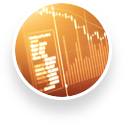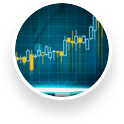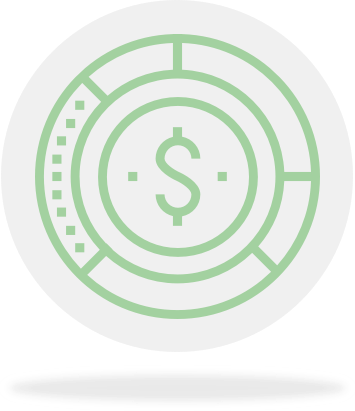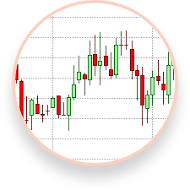Forex Trading for Beginners Guide
Not sure where to begin? Let our guide to forex trading help you.
Open a Demo Account
The Alpari International team is passionate about providing the perfect forex trading experience, whether you’re a seasoned investor or completely new to the forex market. If you’re just starting out in the markets, or you’re looking for a refresher, our guide to trading is designed to break down the terminology and answer the most frequently asked questions by traders.
With our guide, you’ll be trading more quickly and with more confidence in no time.

What is forex?

What is forex trading?

What do forex brokers do?
What is forex?
Forex is short for foreign exchange (sometimes abbreviated to just FX) and is the global, decentralized trading market of the world’s currencies. Traders, investors, banks and exchanges buy, sell and speculate on these currencies, and in turn this activity determines the foreign exchange rate.
What is forex trading?
In forex, all trading is carried out through the so-called ‘interbank’ market. This is an online channel wherein the trading of currencies is conducted 24/5. Some estimate that the total daily trading volume is $5 trillion – making it one of the largest trading markets in the world.
What do forex brokers do?
Like all brokers, a forex broker acts as an agent helping traders access the interbank that conducts all forex trading. Alpari International is one of the most well-known forex brokers in the world. We provide different options tailored to the many different clients that we look after. Whatever your trading goals are, our range of accounts are designed to work with every objective. You can check out our different forex trading accounts here and if you’re only just starting, we suggest you open a demo account to start practicing how to trade without risking any real money.
What are currency pairs?
Forex is all about speculating on the fluctuating currencies between two countries. These two currencies are referred to as ‘currency pairs’ and they’re made up of the base currency and the quote currency. The most traded currency pair of all is the Euro against the US Dollar, which is normally presented as EUR/USD.
Base Currency
Euro
EUR
Quote Currency
US Dollars
USD
Bid Price
Sell 1 Euro for 1.0916 US Dollars
1.0916
Ask Price
Buy 1 Euro for 1.0918 US Dollars
1.0918
Spread
Ask Price - Bid Price
1.0918 - 1.0916 = 0.0002 (2 pips)
Pips
Ask Price - Bid Price
1.0918 - 1.0916 = 0.0002 (2 pips)
What’s a base currency?
This is the first currency set that appears in the forex pair. It’s the one that’s bought or sold for the quote currency. In the example above, the EUR is the base currency.
What’s a quote currency?
This is the second currency that appears in the pair, and is also known as the ‘counter currency’. In the example above, the USD is the quote currency.
What’s an ask price?
This is the price that a trader would ask for when selling the currency pair. The ask price also changes constantly and is driven particularly by market demand, although it’s also susceptible to economic and political factors.
What’s a bid price?
This is the price that a trader is willing to buy a currency pair at. It fluctuates constantly.
What’s a spread?
A spread is the number you get when you deduct the bid (buy) price from the ask (sell) price. This difference is actually the cost of the trade and is extremely important for forex traders. You’ll often hear the term ‘tight spread’ – this means that the trading costs are low.
What are pips?
Pip is short for ‘point in price’ (but can also stand for ‘percentage in point’ and ‘price interest point’ depending on who you ask). To clarify, we use pips to measure price movements and changes in currency pairs. Pips are usually estimated to five decimal points.

How does forex trading work?
To trade forex is to buy and sell currencies – with the aim of making a profit. Forex trading will always involve two currencies at a time, the base currency and the quote currency. The difference in price is where you’ll make your profit or loss.
Is forex trading risky?
Any kind of trading has its risks and that’s crucial to always keep in mind, but it can also create profits which is why so many people do it. Again, we can’t encourage you enough to start trading on a demo account if you’re new to forex trading. Once you’re ready for a live account, you should always fully consider the risks involved.
Open a Demo Account

What currency pairs are most popular in forex trading?
While you can trade almost any currency pair in theory, there are certain pairs that are consistently the most traded. These are called Major pairs (it’s in the name) – they make up 80% of the entire trading volume in the forex market.
These major pairs are associated with stable economies and therefore offer low volatility and high liquidity. Example of major pairs include the aforementioned EUR/USD, the USD/JPY (the US Dollar and the Japanese Yen), GBP/USD (British Pound and the US Dollar) and the USD/CHF (the US Dollar and the Swiss Franc). Another characteristics of major currency pairs is that there’s a smaller risk of them getting manipulated and the spreads are usually pretty small.
What are cross currency pairs?
Cross currency pairs are also known as Crosses, and are pairs that do not include the US Dollar – which immediately makes them more volatile and less liquid than Majors. While the US Dollar features in every major pair, Crosses are concerned with more ‘minor’ currencies like the EUR, the GBP and so forth. Popular pairs in the Crosses family include the EUR/GBP, the GBP/JPY and the EUR/JPY.
What are exotic pairs?
Exotic pairs – or just Exotics for short – are those currencies that come from smaller economies and the so-called emerging markets. They’re usually paired up with a major currency. Because these offer the least amount of liquidity and the highest volatility of the three brackets, they are regarded as the riskiest to trade.
Examples include USD/MXN, GBP/NOK and CHF/NOK.
What are the abbreviations for the most common currencies?
For ease, forex relies on abbreviations for the various currencies. Here’s a sample of the most talked about ones:
EUR: Euro
USD: US Dollar
JPY: Japanese Yen
GBP: British Pound
CHF: Swiss Franc
AUD: Australian Dollar
CAD: Canadian Dollar
NXD: New Zealand Dollar
MXN: Mexican Peso
NOK: Norwegian Krone
DKK: Danish Krone
CNY: Chinese Yuan Renminbi
Forex charts
A lot of forex trading will use charts to demonstrate movements within the markets. These will usually involve one of three types of chart: the Japanese Candlestick, the Bar and the Line.
The Japanese Candlestick Chart,

or Candlestick Chart for short, conveys a lot of information, making it one of the most popular charts for forex traders. With the simplest components, traders can see the high, low, opening and closing prices on a candlestick chart.
These charts have three points – the open, close and the wicks. The wicks represent the high to low range, and the wide section will explain whether the closing price was higher or lower than the opening price. If it closed higher, the candlestick will be filled. If it closed lower, the candlestick will be empty.
The Bar Chart

shows the opening, closing, high and low of the currency prices. So the top of the bar shows the highest price paid, while the bottom shows the lowest price traded during that particular length of time.
The bar itself is indicative of the currency pair’s trading range, while the horizontal lines show, on the left, the opening prices and, on the right, the closing prices.
The Line Chart

is the simplest of all three graphs, which is why forex beginners love them and advanced traders tend to use Candlesticks or Bars. The line chart simply shows the price movement of a currency pair – by having a line drawn from one closing price to the next – during a specified length of time.
How do I start forex trading?
That’s where we come in. Newcomers to forex trading should always use a broker who is a) regulated and b) has a five-year track record, minimum. With trading, you will need to deposit funds to make the first trade, in what is called a margin account. Needless to say, you can make all the rookie mistakes you want with forex trading on a demo account first, without risking any of your actual money, until you gain more confidence.
Sign up for a demo account today, and take your first steps into the exciting and highly profitable world of forex trading.
Open a Demo Account